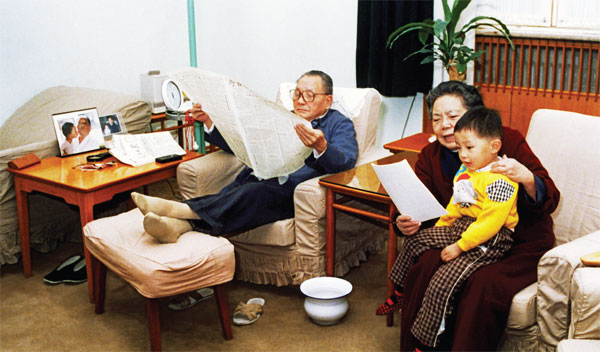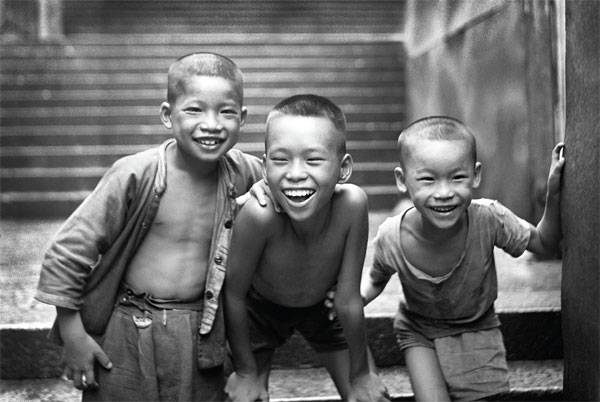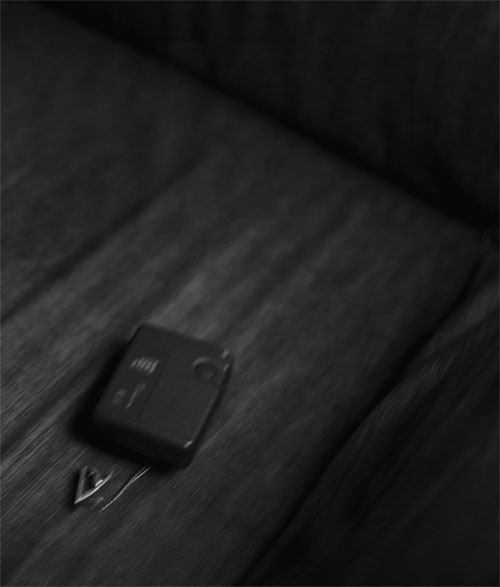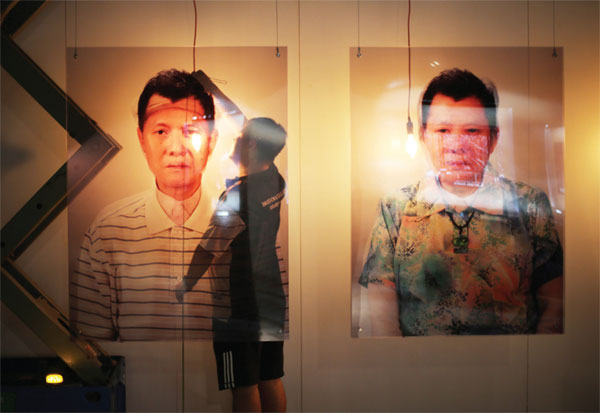Relative matters
Updated: 2016-08-05 08:04
By Chitralekha Basu(China Daily)
|
|||||||||
A fine selection of images shot by ace lensmen from HK and beyond is on view at HKIPF's biennial event which opens tonight.A preview by Chitralekha Basu.
Even leaders have homes to go back to at the end of a hectic and eventful work day, put their feet up on an ottoman and relax, secure in the company of their loved ones. As Deng Xiaoping, the late Chinese leader, is seen to be doing in an image clicked by Yang Shaoming. Deng appears in the company of his wife, Zhuo Lin, and a young grandson. The photo was taken on the day he resigned as chairman of the Central Military Commission of the Communist Party of China. It's a candid shot, with excellent detailing and depth. The presence of a spittoon, home-wear slippers, kung fu shoes, a wrist-watch holding down a couple of banknotes left on the table and framed family photographs underscore the down-to-earth, human side of a leader whose public persona was larger than life.
"I would hang around his house and he didn't mind me at all," recalls Yang, who is visiting Hong Kong from hometown Beijing. "As the photograph shows, Deng doesn't even seem aware of the fact that a camera was focused on him."
The photo, which went on to win an award at the World Press Photo Contest in 1998 and established Yang's already recognized skill for photographing leaders as flesh-and-blood entities, is part of Hong Kong International Photo Festival's (HKIPF) biennial showcasing of first-rate photographic talent in the region. The show, called 1000 Families, is the first in a series of events slated for the rest of the year. It opens tonight at ArtisTree in Taikoo Place.
At a time when the sustainability of family ties faces serious challenge from the demands of a fast-paced, professionally-demanding life, it's interesting to see the diverse ways in which the 13 photographers featured in the show have interpreted the idea of the family. At one end of the spectrum are the works by the recently-deceased Ho Fan (1931-2016), commonly-acknowledged as the doyen of Hong Kong street photography who continues to inspire the present generation.
The HKIPF show, even as it pays a tribute to Ho by exhibiting some of his rarely-seen photographs, is also a reminder that photography in Hong Kong has come a long way since Ho's chiaroscuro images shot in the 1950s and 60s - in which the children playing and people sitting out on the streets seem to grow organically from the landscape they inhabit. Take the slightly-spooky photo installations by 1987-born Doreen Chan, for instance. In them regular, everyday objects - polythene sheet, storage boxes, a glass half-filled with water - are vested with a strangeness, de-familiarized by manipulating camera angles and the use of light.
"Ho Fan also worked for the Shaw brothers, so you get a sense of the cinematic in his work," says Alfred Ko, chairman, HKIPF. "His works on show here are representative of a period in which Hong Kong photographers were quite famous (the world over) for their achievement in salon photography."
Ko draws attention to the images contributed to the show by Japanese photographer Masashi Asada, which might be read as a throwback to the theatricality and elaborate, stylized composition in some of Ho's photographs. "Asada is really funny. He dresses up each member in his family like they were in a cos play and makes them pose for him," says Ko. The solemn, no-nonsense looks on the faces of Asada's middle-aged parents and grown-up siblings, as they play firefighters or the Japanese mafia, underscore the element of the absurd, while reinforcing the theme of family ties. Evidently, his family members are willing accomplices in Asada's project, even if they are made to look ridiculous in it.
Vicarious journeys
On a relatively somber note, photographer Chan Dick's video installation is dedicated to his father who passed away in 1992. Shot in grainy, dark tones, the outlines of objects and people are often difficult to separate from the dark background in these images. Viewers are invited to lie down on a typical hospital bed as they watch the photos being projected on a screen overhead. The photographed objects include a tie and shaving razor used by the deceased, a Dairy Farm plastic container in which he bought ice cream for his young son, and also a pager, an electronic device used in the pre-mobile telephone days. The news of his father's passing had reached Chan through this now-extinct tool.
The video installation is Chan's way of apotheosizing a 24-year-old memory that seems too far back in time already. There are a few photos of his mother and sister as well, blurred, barely recognizable outlines, overlaid with texture. Sometimes they have the feel of an old wall covered in blotchy paint, "to give these an additional layer of depth and meaning".
Dick Lau has shot the elderly and infirm among his subjects against the most vividly colorful backdrops, while the relatively younger people seem to be a blurry mass. Lau had been visiting a hospital for the elderly, where the inmates, most of whom were unable to step out the building without help, told him they longed to go outdoors, perhaps enjoy a vacation with their families. Lau shot scenes of their chosen destinations - the Ferris wheel in Ocean Park and a beach in Taiwan at sunset - and used these as backdrops against which his subjects were made to pose with their families. It was make-believe, but the photos meant a lot to the people in them. While photographing younger people, however, Lau has tried to underscore the transient nature of human existence, hence they are deliberately kept out-of-focus against a sharply-etched background.
"I had asked to shoot both old and younger people against a background which they thought would hold the most meaning in their lives. Both groups were happy with the photos I took," says Lau.
|
Yang Shaoming's candid click of Deng Xiaoping relaxing at home won a World Press Photo award. |
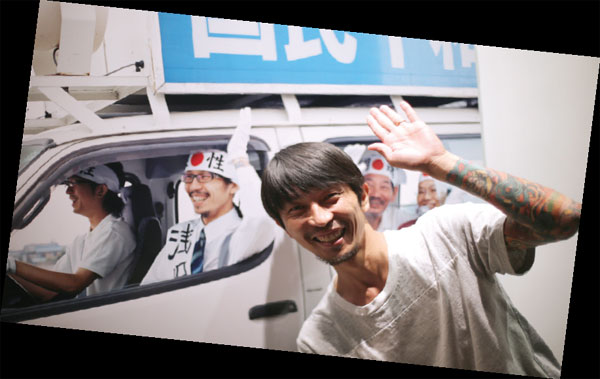
|
Ho Fan was a pioneer of street photography in Hong Kong (above and right). |
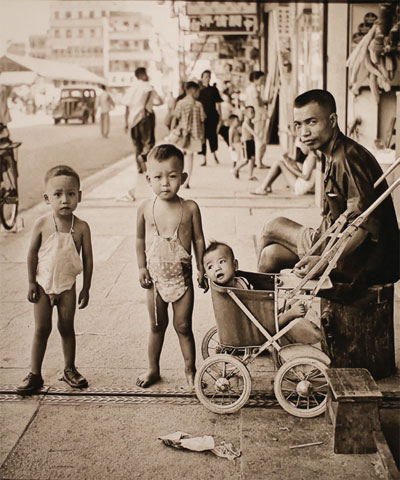
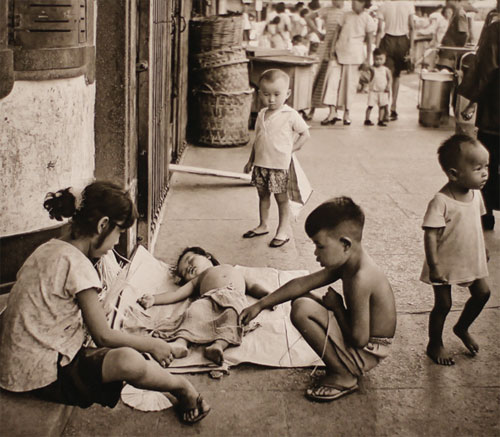
|
Chan Dick's photo of the pager linked to his father's memory. |
|
Almond Chu has put himself in the portraits of his family members. |
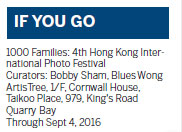
(China Daily 08/05/2016 page7)
